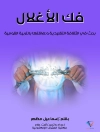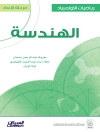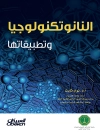Institutional diversity serves as one of the fundamental hallmarks of American higher education. After a long history of support for many institutional types, the past 40 years have seen a decline in institutional variety. Through a discussion of history, theoretical contexts, and causes of homogenization, this monograph examines how higher education policymakers and leaders can strengthen institutional mission and preserve the benefits of institutional diversity.
Higher education needs to serve a variety of functions for students, from liberal arts education to vocational training programs. No single institution or institutional type can adequately fulfill all of these roles, and this monograph considers the rewards and challenges of maintaining a healthy, beneficial diversity. It also covers the roles, purposes, trials, and benefits of institutional diversity. It provides practical examples and theoretical perspectives useful in understanding the complexities of higher education systems and the external pressures faced by colleges and universities that challenge institutional mission and threaten institutional diversity and its well-established benefits for students and society.
This is the third issue of the 39th volume of the Jossey-Bass series ASHE Higher Education Report. Each monograph is the definitive analysis of a tough higher education issue, based on thorough research of pertinent literature and institutional experiences. Topics are identified by a national survey. Noted practitioners and scholars are then commissioned to write the reports, with experts providing critical reviews of each manuscript before publication.
Daftar Isi
Executive Summary vii
Foreword xi
Defining Institutional Diversity 1
Aspects of Institutional Diversity 4
Diversity Versus Diversification Versus Differentiation 9
Interactions With the Environment 12
Overview of the Monograph 14
Historical Context of Institutional Diversity 17
Growth During the Colonial Period 18
Establishing American Higher Education 19
Failure of the National University Idea 20
Institution Building 23
The Changing Curriculum 24
Rise of the Research University 25
Transition From Elite to Mass Higher Education 28
The Postwar Period 31
Conclusion 35
Theoretical Contexts 37
Population Ecology 37
Resource Dependency Th eory 42
Institutional Theory 44
Conclusion 48
Benefits of Institutional Diversity 49
Meeting the Needs of All Types of Students 49
Increased Institutional Effectiveness 51
Provide Models 54
Support Reform Th rough Competition 55
Serve the Political Needs of Interest Groups 57
Protecting Academic Freedom and Autonomy 58
Support Elite and Mass Higher Education 61
Improve Social Mobility 62
Minority-Serving Institutions 64
Conclusion 67
Causes of Homogenization 69
Academic Drift 70
Prestige-Maximizing Activities 73
Statewide Coordination 79
Conclusion 82
The Future of Institutional Diversity Research and Practice 83
Market Smart and Mission Centered 84
Policymakers 85
Campus Leaders and Administrators 89
Faculty 92
Students 94
Conclusion 95
References 97
Name Index 111
Subject Index 116
About the Author 121
Tentang Penulis
MICHAEL S. HARRIS is associate professor of higher education at Southern Methodist University in Dallas, Texas.












